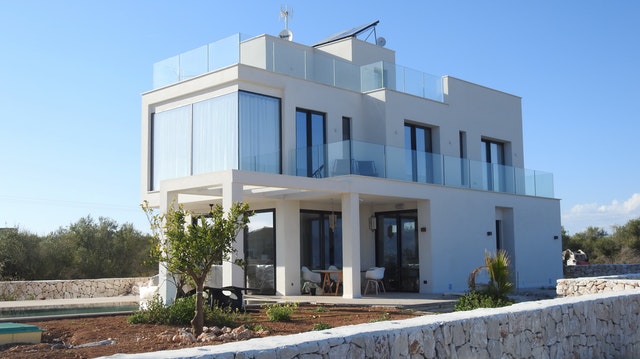4 Top Sustainable Home Trends
 The emergence of sustainable energy and products have solidified the go-green movement. Solar energy and electric cars are just the tip of the iceberg.
The emergence of sustainable energy and products have solidified the go-green movement. Solar energy and electric cars are just the tip of the iceberg.
The impact of products on the environment has become a significant measure about their value. Those same principles are also being applied to homes. Smart homes and energy efficiency have a direct correlation to home values and listing prices. That’s why homeowners and home builders alike have an eye toward sustainable trends. These are some of the top-ranked home trends.
1: Durability Matters
After the catastrophic weather that damaged and destroyed homes in Florida and the Gulf states, “resiliency” has emerged as a key sustainability term. Contractors and home designers are including materials that stand up to extreme weather. These materials also consider toxicity levels, with the most non-toxic being among the more favorable. The storms will come, but how properties resist them and impact the environment afterwards are important sustainability trends.
2: Natural Light Keeps Trending
The use of sustainable solar energy has prompted many to go directly to the source. Large skylights and windows allow natural light to warm homes and reduce the need for electric lighting. Natural light also helps stave off Seasonal Affective Disorder during shorter winter days. Simply put, incorporating natural light resources is a trend that builds off of solar energy thinking.
3: Water Filtration Systems
It’s no secret that municipal water supplies have been compromised on occasion. This trend that started ramping up in 2017 continues to have legs as homeowners are securing water purity. In terms of sustainability, homeowners with water filtration systems have been utilizing them as a method to reduce the amount of bottled waters they purchase. Above and beyond the cost-saving benefits, the reduction in unsustainable plastics is helping to protect the environment.
4: Electric-Only Homes
The high carbon emissions from fossil fuels has motivated environmentally conscious Americans to turn to wind and solar. These days, improved energy storage from high-capacity lithium batteries has opened the door for homes to go all-electric. This appears to be an emerging trend that could pick up additional steam as energy storage technology moves forward. Electric-only homes could be a major step in allowing average homeowners to get off the grid. This trend is not only sustainable for the environment, it lessens the monthly impact on wallets.
Living in the technology era means that change can occur rapidly, and green-friendly homeowners may want to stay up to date on the latest sustainable home trends. They could improve home values going forward.
Whether you are in the market for an eco-friendly home or want to make improvements to your existing home, contact your trusted mortgage professional to explore all of your financing options.

 Urban and suburban life offers wonderful conveniences and cultural benefits. But a downside that many families are experiencing is the pervasive use of electronics and disconnectedness from nature.
Urban and suburban life offers wonderful conveniences and cultural benefits. But a downside that many families are experiencing is the pervasive use of electronics and disconnectedness from nature. You can make the most of a small home with smart design strategies and careful planning.
You can make the most of a small home with smart design strategies and careful planning. Last week’s economic reports included readings from Case-Shiller, Commerce Department reports on pending home sales and construction spending and an FOMC statement. Labor sector reports on job creation and the national unemployment rate were released along with the monthly Consumer Confidence Index. Weekly reports on mortgage rates and first-time jobless claims were also released.
Last week’s economic reports included readings from Case-Shiller, Commerce Department reports on pending home sales and construction spending and an FOMC statement. Labor sector reports on job creation and the national unemployment rate were released along with the monthly Consumer Confidence Index. Weekly reports on mortgage rates and first-time jobless claims were also released. A-Frame houses have spiked in popularity over the last couple of years. These adorable homes can be quirky or sleek and modern. They are shaped like a triangle — hence the name. A-Frame houses are shaped like the letter A. The walls begin near the foundation and slope upwards in a slant. The walls meet at the top to form a triangle or A-shape.
A-Frame houses have spiked in popularity over the last couple of years. These adorable homes can be quirky or sleek and modern. They are shaped like a triangle — hence the name. A-Frame houses are shaped like the letter A. The walls begin near the foundation and slope upwards in a slant. The walls meet at the top to form a triangle or A-shape.